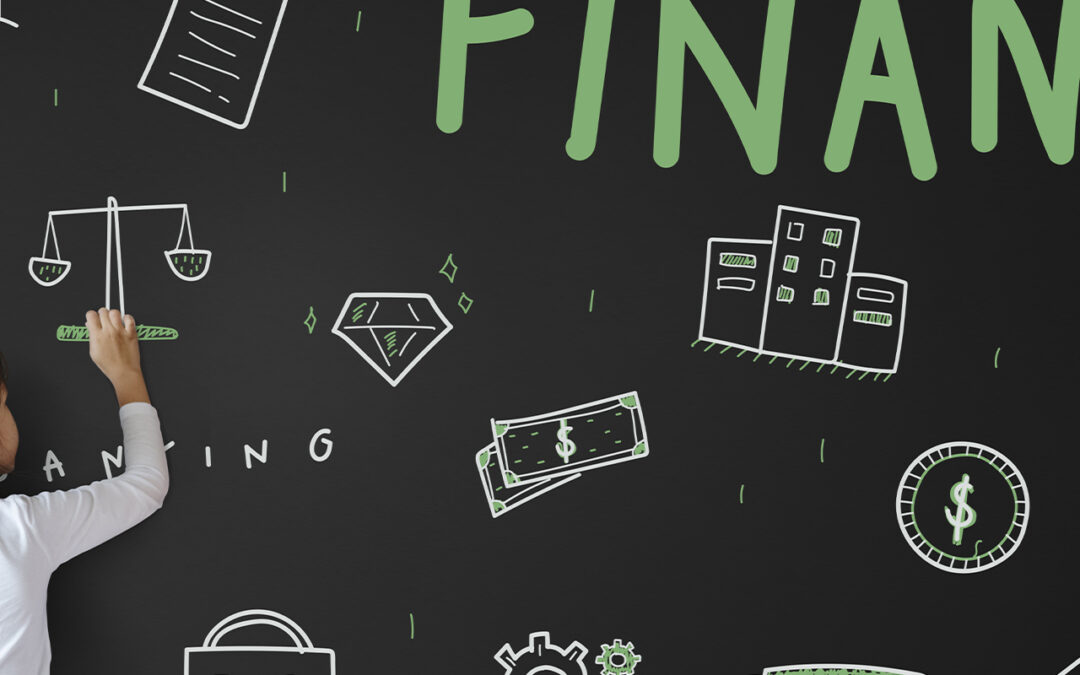
by yncuniversity | Dec 10, 2024 | Fraud Prevention
Keeping Your Finances Safe this Festive Season
December 10, 2024
As the hustle and bustle of the holiday season arrives, many of our members will experience a short-term change in their spending habits. Many of us are spending more at places where we may not usually shop, and we may not be as diligent with our finances as we are the rest of the year due to the business of the season. We are also susceptible to more scams, like those listed below.
Online Shopping is where we are at the highest risk because this is often such a big part of our holiday spending. The most common things we suggest watching out for are:
- Fake websites
- Fake product listings
- Fake shipping notifications
- Parcel redelivery or delivery delay scams
- Fake event tickets being sold
Charity Scams also ramp up this time of the year as the giving spirit is upon us. These may look like:
- Fake charities
- Fake donation requests
- Crowdfunding scams
Confidence Scams work by exploiting your social or parasocial (“one-sided relationships, where one person extends emotional energy, interest and time, and the other party, the persona, is completely unaware of the other’s existence.”) relationships to trick you into giving up information or money. Keep an eye out for:
- Fake contests and giveaways
- Impersonation scams: family/friends or celebrities
- Phishing for gift cards
- Fake travel or timeshare scams
Romance Scams also spike around the holidays, as they take advantage of the loneliness some might experience during the holidays.
Skimming is something to always be aware of. We urge you to check that there is not anything added onto the chip reader of a machine you are using. They can be added quickly, and we are more likely to miss them as we are rushing to get the shopping done.
How to Protect Yourself:
- Verify websites: Always double-check URLs and look for secure payment methods when shopping online (e.g., secure payments via PayPal or credit card).
- Navigate to websites independently: Rather than clicking a link, we suggest navigating to the website by typing in the website address to avoid malicious links.
- Watch out for suspicious emails: Be cautious of unsolicited emails, especially those claiming to be from well-known retailers, delivery services, or charities.
- Do not share personal information: Never share sensitive personal information (like gift card details or bank account information) unless you are sure the request is legitimate.
- Use credit cards: For online purchases, use credit cards with fraud protection rather than debit cards, which might be harder to recover funds from.
- Research charities: Before donating, research organizations to ensure they are legitimate. Websites like this one provided by the Canadian Government, can help verify nonprofits.
- Avoid high-pressure requests: Scammers often create a sense of urgency, but legitimate businesses and family members will not demand immediate financial help, especially through gift cards.
Don’t let these fraudsters turn your festive season into a finance nightmare. Stay vigilant!
YNCU members, if you know, or think you are a victim of a scam, please contact our Service Excellence Centre at 1-800-413-YNCU (9628). You can also contact the Canadian Anti-Fraud Call Center at 1-888-495-8501.
Don’t forget to follow us on Instagram and Tik Tok for more Honest Money Talk tips!

by yncuniversity | Nov 29, 2024 | Financial Literacy
The Importance of Financial Literacy for Youth
November 26, 2024
Nurturing Seeds of Prosperity: Financial Literacy for the Next Generation
Imagine a world where every teenager can confidently navigate the financial seas, steering clear of debt icebergs and sailing towards a horizon of economic stability. This isn’t just a fanciful dream; it’s the potential reality we can foster through teaching our youth about financial literacy.
The Cornerstone of Future Success: Understanding Money Matters
Financial literacy is more than just balancing a checkbook or saving for a rainy day. It’s about making informed decisions that lead to long-term prosperity and security. Here’s why it’s crucial:
- Empowerment Through Education: Knowledge is power, and when young minds grasp the concepts of budgeting, investing, and credit, they’re equipped to make savvy choices. This access to information does not have to come at a cost. YNCU created YNCUniversity for this exact reason – it is a financial literacy resource hub dedicated to empowering individuals with the knowledge and tools necessary to make informed financial decisions. YNCUniversity features a curated library of financial literacy resources including easy-to-read blogs such as this one, the ability to book a free in-person or virtual presentation from one of our experts on a variety of financial topics, and a calculator to help you work out the details of your financial plan and assist you in reaching your goals.
- Debt Dodging: With student loans and credit card offers lurking around every corner, understanding the implications of debt can help youngsters avoid financial pitfalls.
- Wealth-Building Wisdom: Early lessons in compounding interest and investment strategies can set kids on a path to growing their wealth exponentially over time.
Practical Money Skills: More Than Just Numbers
Sure, arithmetic plays a role in financial literacy, but there’s a human element that’s often overlooked. Teaching kids how to handle money also involves nurturing values like patience, discipline, and foresight. It’s not just about what’s in their wallet—it’s about shaping their character.
Integrating Financial Literacy into Everyday Life
So, how do you weave these important lessons into the fabric of daily life? Here are a few practical tips:
- Lead by Example: Kids are keen observers. When they see you budgeting or discussing financial goals, they’re likely to follow suit.
- Open a Dialogue: Use everyday moments, like a trip to the grocery store, as opportunities to discuss budgeting and smart spending.
- Gamify Learning: There are plenty of apps and games designed to make financial education fun and engaging.
The Ripple Effect of Financially Savvy Youth
When children learn to manage money effectively, the benefits ripple outwards. They become adults who contribute positively to the economy, understand the value of hard work, and pass on their wisdom to the next generation. It’s a cycle of prosperity that starts with simple lessons in financial literacy.
Investing in Our Children’s Future
Instilling financial literacy in the young is akin to planting a garden. It requires patience, care, and the right knowledge. But the harvest is a generation of financially responsible adults who can navigate the complexities of the economic landscape with ease.
YNCUniversity is here for all your financial literacy needs. Need one-on-one help? We got you! Reach out to our advisors. Don’t forget to follow us on Instagram and Tik Tok for more Honest Money Talk tips!

by yncuniversity | Nov 18, 2024 | Fraud Prevention
How to Respond or React to Potential Scam Alerts
November 19, 2024
Before responding to a potential scam, it’s crucial to consider several factors to protect yourself from falling victim to fraudulent schemes. Here are some things to think about:
1. Sender’s Identity – Consider the identity of the sender. Is it someone you know and trust, or is it an unknown entity? Scammers often impersonate trusted organizations or individuals to deceive victims. Look for subtle changes. Attackers often make very small changes to an email address that might be easy to miss at first glance. A common tactic is replacing letters with numbers or characters that look similar, like replacing “l” with “1” or “o” with “0”. They might also use a domain that’s close but not identical, like “@googlemail.com” instead of “@gmail.com” or something like “@paypal-support.com” instead of “@paypal.com”.
2. Urgency – Scammers often create a sense of urgency to pressure victims into making hasty decisions. Take a moment to assess whether the request seems excessively urgent or if there’s a deadline imposed on you.
3. Do Not Engage – Refrain from engaging further with the sender if you suspect it’s a scam. Avoid responding to emails, clicking on links, or providing any personal information.
4. Request for Personal Information – Be wary of any requests for personal or sensitive information, such as passwords, social insurance numbers, or financial details. Legitimate organizations typically won’t ask for such information via unsolicited emails or messages.
5. Unsolicited Communications – If you receive unsolicited communications, especially those related to financial matters or offers you didn’t sign up for, approach them with caution. Legitimate businesses usually don’t reach out randomly.
6. Verify the Source – Take steps to verify the authenticity of the sender or the organization contacting you. Check official websites, contact numbers, or customer service channels to confirm the authenticity of the communication.
7. Grammar and Spelling – Pay attention to the language used in the communication as well as the spelling. Scam emails or messages often contain grammatical errors, spelling mistakes, or awkward phrasing.
8. Links & Attachments – Avoid clicking on suspicious links or downloading attachments from unknown sources. These could be in emails or phone text messages. These could contain malware or lead to phishing websites designed to steal your information.
9. Educate Yourself – Familiarize yourself with common scam tactics and stay informed about the latest scams circulating online. This knowledge will help you recognize and avoid similar threats in the future.
10. Trust Your Instincts – If something feels off, too risky, or too good to be true, trust your instincts and err on the side of caution. It’s better to be safe than sorry when dealing with potential scams.
By considering these factors and exercising vigilance, you can better protect yourself from falling victim to scams and fraudulent schemes. When in doubt, it’s always wise to consult with trusted friends, family members, or financial advisors before taking any action.
YNCU members, if you know, or think you are a victim of a scam, please contact our Service Excellence Centre at 1-800-413-YNCU (9628). You can also contact the Canadian Anti-Fraud Call Center at 1-888-495-8501.
Don’t forget to follow us on Instagram and Tik Tok for more Honest Money Talk tips!

by yncuniversity | Oct 24, 2024 | Financial Literacy
Spooky Situations to Avoid in Your Financial Journey
October 22, 2024
Embarking on your financial journey can feel like setting sail in uncharted waters. With a myriad of options and paths, it’s easy to feel overwhelmed or make missteps that could lead to choppy seas ahead. But fear not! By being aware of common pitfalls, you can navigate these waters with confidence and reach your fiscal destinations unscathed.
1. The Debt Trap: Treading Carefully
One of the most treacherous snares is the debt trap. It’s all too easy to fall into the allure of credit cards and loans, convincing yourself that you’ll pay it off “next month.” Before you know it, interest has ballooned, and you’re in over your head. Avoid excessive borrowing and if you do find yourself in debt, prioritize paying it off. Consider strategies like the snowball method—tackling smaller debts first for quick wins—or the avalanche method—paying off high-interest debts as a priority.
2. The Investment Illusion: Seeking Substance Over Sparkle
Investment opportunities will come knocking, glittering with promises of high returns. Yet, not all that glitters is gold. Avoid jumping on every bandwagon; instead, do your homework. Understand what you’re investing in, the risks involved, and whether it aligns with your long-term goals. Diversification is your ally here, spreading risk across different asset classes to cushion against market volatility.
3. Lifestyle Inflation: Keeping Up with Yourself, Not the Joneses
As your income grows, so might the temptation to upscale your lifestyle proportionally. This phenomenon, known as lifestyle inflation, can quickly erode your newfound wealth. Resist the urge to splurge on every luxury or upgrade. Instead, focus on building your savings and investments. Living below your means isn’t about depriving yourself—it’s about ensuring future financial freedom.
4. Neglecting Insurance: An Ounce of Prevention
Often overlooked, insurance is the safety net that catches us when life throws curveballs. Skimping on health, auto, or renters insurance can lead to catastrophic out-of-pocket expenses in the face of adversity. View insurance as an investment in your peace of mind and ensure you’re adequately covered.
5. Retirement Planning: The Early Bird Gets the Worm
It’s tempting to push retirement planning to the back burner, especially when it feels eons away. However, the power of compound interest means that the earlier you start, the more you stand to gain. Even modest contributions to a retirement account now can grow into significant sums over time. Start small if you must, but start now.
Your financial journey is uniquely yours, and while there are common pitfalls to avoid, remember that informed decisions and a proactive approach are your best navigational tools. Steer clear of debt, invest wisely, live within your means, protect yourself with insurance, and plan for the future. With these principles as your compass, you’ll be well-equipped to chart a course toward financial stability and success.
YNCUniversity is here for all your financial literacy needs. Need one-on-one help? We got you! Reach out to our advisors. Don’t forget to follow us on Instagram and Tik Tok for more Honest Money Talk tips!

by yncuniversity | Oct 3, 2024 | Fraud Prevention
How to Spot a Fraudulent Cheque: Key Signs and Risks
October 3, 2024
Fraudulent cheques can cause significant financial loss and legal trouble. With the rise of mobile banking, cheque fraud schemes have evolved, and it’s important to know how to identify a fake cheque.
Here are some key signs to look for and risks to be aware of:
The Form: “Mobile Deposit Only” is Not a Valid Cheque
One of the first red flags of a fraudulent cheque is the phrase “Mobile Deposit Only” or any similar wording. This form is not considered a valid cheque by financial institutions. The phrase suggests that the cheque is only intended for mobile deposit, but legitimate cheques should not have such restrictions printed on them. If you come across a cheque with this phrase, it is best to treat it with suspicion.
What to Look for on a Cheque
To identify a fraudulent cheque, carefully examine these key elements:
- Check the Details: Ensure the cheque has all the necessary details, including the payer’s name, the bank’s name, the cheque number, and a valid date. Missing or incomplete information can be a sign of fraud.
- Check for Alterations: Look for signs of tampering, such as erasures, corrections, or overwriting. Any irregularities could mean the cheque has been altered.
- Pay Attention to Printing Quality: A legitimate cheque usually has high-quality printing with clear, consistent fonts. Fuzzy or distorted printing can indicate that a cheque has been forged or created using low-quality printing methods.
- Verify the Bank Details: Ensure that the cheque contains the correct bank name, address, and logo. Fraudsters often use incorrect or outdated information to make a cheque appear legitimate.
- Inspect the MICR Line: The MICR (Magnetic Ink Character Recognition) line at the bottom of the cheque contains the routing number, account number, and cheque number. Check for irregularities in font size or spacing. Real cheques are printed with magnetic ink; counterfeit cheques often use standard ink.
Additional Risks Involved in Cheque Fraud
There are several risks associated with cheque fraud, including:
- Financial Loss: If a fraudulent cheque is deposited, and it bounces, you could be held responsible for the amount, potentially resulting in significant financial loss.
- Legal Consequences: Depositing a fraudulent cheque, even unknowingly, can lead to legal complications. A financial institution could report suspicious transactions to authorities, and the depositor could face investigation.
- Identity Theft: Fraudulent cheques are often part of broader schemes, like identity theft. If you provide personal information to a fraudster, it can be used for further fraudulent activities.
Being vigilant and knowing the warning signs of a fraudulent cheque can help protect you from financial loss and legal risks. Always examine cheques carefully, especially if they contain unusual phrases like “Mobile Deposit Only.” When in doubt, contact your financial institution to verify the cheque’s authenticity before taking any action.
YNCU members, if you know, or think you are in possession of a fraudulent cheque, please contact our Service Excellence Centre at 1-800-413-YNCU (9628). You can also contact the Canadian Anti-Fraud Call Center at 1-888-495-8501.
Don’t forget to follow us on Instagram and Tik Tok for more Honest Money Talk tips!





